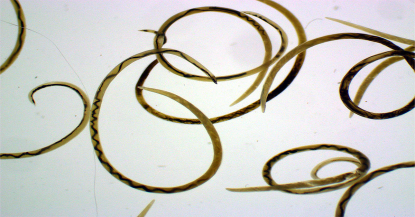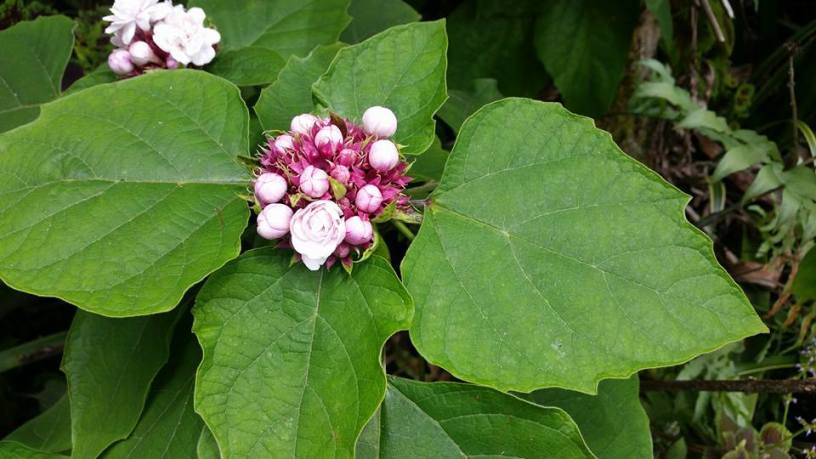Rat lungworm disease, a brain-invading parasite that humans contract through slugs and snails, has been making national and international news lately as a number of recent cases have been reported in Hawaii. Some of the news articles carry a tone as if rat lungworm is a new thing to Hawaii; like it snuck up on us and caught everyone here by surprise.
It may be new to Maui, but it has been here on the Big Island since around 2004, mostly in the island’s southeastern district of Puna. Here in Puna, everyone seems to know someone who has suffered from rat lungworm disease. It’s been on a lot of our minds for years. Now, it’s spreading and cases of infections are increasing.
There is much criticism that the Hawaii State Department of Health has not been doing an effective job of educating people (especially tourists) about risks of rat lungworm disease in Hawaii. Some people would even accuse the department’s lack of response to rat lungworm as being negligent.
There haven’t been concrete efforts by the state to educate the public or to control the proliferation of the invasive semi-slug species, which is thought to be the best carrier of the parasite. The state, over the years, has continually shot down bills that were introduced which would have allocated funding for public education and research on the rat lungworm parasite. Many believe the state didn’t want to bring too much attention to the issue because it could potentially affect tourism.
In 2015, when dengue fever came to the Big Island, there were daily updates and public campaigns to “Fight the Bite!”. Every tourist coming to the islands was made aware of dengue fever. With rat lungworm disease, the risks of becoming infected might be lower, but the health outcomes are much worse than with dengue fever. Eating just one tiny slug hidden in the folds of raw salad greens can destroy a person’s life.

The parasites, as they travel up the spinal cord and into the brain (where they crawl around until they eventually die), can cause severe headaches, a stiff neck, fever, vomiting and diarrhea, excruciating nerve pain, paralysis, coma, and death. There is no cure. Many who have been infected continue to live with debilitating side effects of the parasite, long after the initial infection. Some people have to rely on hardcore prescription painkillers. People have lost their health, careers, ambitions, and lifestyles- all from a slug.
By withholding information regarding the risks of rat lungworm disease in Hawaii, tourists are robbed of the knowledge they need in order to avoid becoming infected with the parasite.
If that couple honeymooning in Maui who got infected with rat lungworm had known to take precautions at the start of their trip, perhaps they would have returned home to California with just each other and maybe a couple of souvenirs, instead of bringing back gangs of parasite worms that are roaming around their brains.
 Photo credit hawaiipublicradio.org
Photo credit hawaiipublicradio.orgWhile a tourist who stays in hotels and eats in mainstream restaurants is unlikely to become infected with the parasite, those who stay in vacation rentals and prepare their own food have a higher risk- especially if they don’t know they should be taking certain precautions.
Additionally, due to globalization, the rat lungworm parasite is now being found in the mainland U.S. So this is not just an issue that is isolated to Hawaii and other tropical regions (the parasite originates from SE Asia and was brought to Hawaii at some point). Education is needed everywhere.
Fortunately, it’s easy to prevent rat lungworm disease.
The main rules for avoiding rat lungworm disease:
- If you are going to eat raw local greens, pull off each individual leaf from the base by hand and inspect for slugs or slug slime, and rinse, rinse, rinse under running potable water.
- Don’t ever eat any fruit or veggies directly from garden/tree- wash first.
- Don’t walk around barefoot, especially in the jungle.
- Freezing or cooking destroys the parasite
- Don’t handle slugs with bare hands
The main sources of education on rat lungworm in Hawaii have been through the efforts of Dr. Susan Jarvi and Kathleen Howe, from the College of Pharmacy at UH Hilo. They have been researching rat lungworm disease for years. Kathleen Howe’s own son was infected with rat lungworm in 2008 and was in a coma for several months. They have been constant advocates for more education, research, and funding on the disease. Currently, the bill SB272, which will allocate funding towards rat lungworm, has passed through several committees and will hopefully pass at the next conference committee meeting.
Perhaps the recent surge in media attention will provide an extra incentive for state politicians and policymakers to pass the bill!


I just flew home to Hilo from San Diego on Thursday.
Hawaiian Air does not advise or let travelers know in advance of issues like this.
It’s all about spending $ while here, nothing else.
I consider this fact as negligence!
LikeLike
Hi Jack,
Thanks for the comment. I agree, I think that everyone stepping off the plane into Hilo should know what rat lungworm is and how to avoid it!
LikeLike
Mahalo Megan
I was one of the RLW cases diagnosed in early Feb this year.
I came out of it very well.
I am having a few side effects. But nothing I can’t get through.
I was in Hilo Hospital almost 6 weeks.
I suspect Avocados off the ground under a tree? It was the only thing I did from Dec through Jan that put myself at risk.
Aloha!
LikeLike
Reblogged this on Car In Hawaii and commented:
Thanks for the well written article . I’ll be Sharing on a few tourism related websites.
I have NO faith in Hawaii dept of health to respond appropriately. The success with dengue was in spite of a delayed response.
LikeLike
Welcome to the Hawaii, please SUE us for not informing you of our natural means of causing you harm ,sickness, and death. We always knew but, choose not to tell you so you can enrich us and go home!
LikeLike